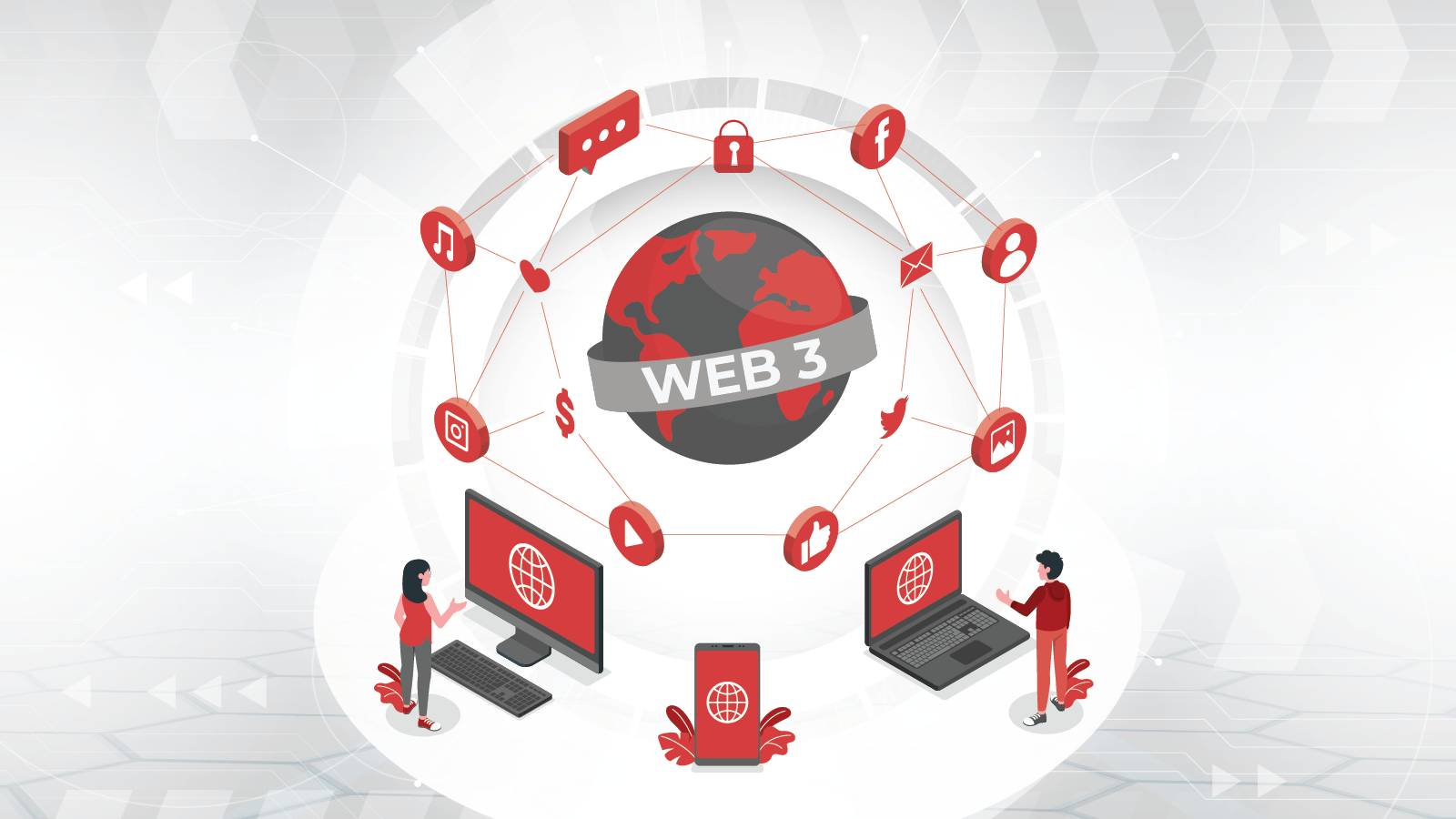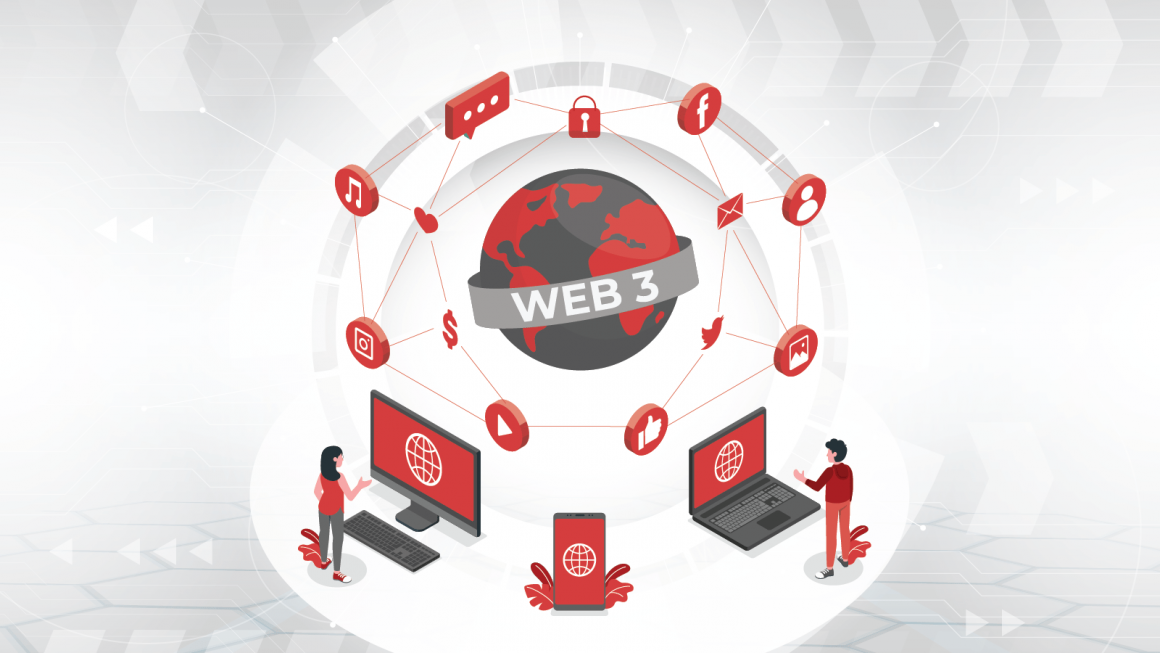
The internet was originally designed to ensure that physicists around the world could share information in a manner that did not require everyone to function on the same hardware and software. What started as a small vision of Tim Berners-Lee in 1991 has grown into the technology that powers our everyday life. The original vision of those who wished to offer users the ability to communicate freely across the globe has turned into a highly profitable technology for a handful of large corporations.
Today, a new evolution in the form and function of the internet is emerging, known as Web3 or Web 3.0. This latest iteration of the internet turns the methodology of how the internet works upside down, taking what has turned into a machine churning out corporate profits and transforming it into a user-focused, decentralized experience. Powered by the latest advancements in technology, Web3 is quickly becoming the central topic when discussing the future of the internet. For those interested in harnessing the power of this revolutionary concept, the following guide will walk through the basics of Web3, as well as the importance of this advancement in the internet.
A Definition of Web3
In a basic sense, Web3 is a new form of the internet focused on decentralizing the building, operation, and ownership of the web. The goal of Web3 is to give users back control of the internet, doing away with the monopolized approach the internet faces today.
In the current system, a few large corporations control the majority of what takes place on the internet. These companies are incentivized purely by money and profit margins. The result is that users have little-to-no control over how the internet is formed and what takes place with their data when using the internet.
Web3 is based on blockchain technology and offers an egalitarian approach to the internet. To understand Web3 better, it helps to start with the history of how the internet evolved to where it is today.
Understanding the History of the Web
Before Web3, there have been two key iterations of the web:
- Web 1.0 — The first version of the internet was read-only. In place until the early 2000s, this system consisted of static websites. There were little to no interactions between the users of the internet and the creators of the internet. To design a website, creators needed a fairly in-depth understanding of technology, leading to a limited number of content curators. Web 1.0 was the beginning of a world where information could be shared across the globe. However, it was highly limited in the scope of how many users could contribute to this information sharing.
- Web 2.0 — Emerging in the early 2000s, Web 2.0 was a natural evolution of the internet. Rather than offering users a read-only experience, Web 2.0 featured the ability for everyday users to contribute to the content on the internet. Through platforms such as social media, users could generate content and interact with companies and other individuals through the web. As the power of Web 2.0 grew, the monetization of the internet grew in turn. This led to the internet of today, where a few large corporations profit off of the curation of content by users.
These two iterations of the internet have led to the premise of Web3. Using blockchains, cryptocurrency, and non-fungible tokens (NFTs), the vision of early Web3 adopters is to decentralize the internet and give back power to everyday users. The idea is to design an internet where not only can users read and contribute to the internet but also retain ownership of their data and information and make important decisions regarding the protocols of the internet.
The Importance of Web3
As more users push for a decentralized internet, the importance of Web3 continues to grow. There are three key areas where this importance is noticeable.
True Ownership of Digital Assets and Data
One of the most critical aspects of Web3 is that it allows users to have true ownership over their digital assets and data. This happens in two key ways:
- Concerning digital assets, Web3 uses blockchain technology that allows users to transfer digital assets across different experiences and platforms. For example, if a user is playing a game within one metaverse and earn a token or digital asset, it will be tied to their digital wallet. This wallet will continue to follow users across all experiences. Using non-fungible tokens (NFTs), ownership of any asset is constant and not tied to the continuation of a specific platform or game. This is in contrast to how digital ownership functions today. Currently, if a user purchases a digital asset, it is tied to the specific platform in which they made the purchase. If the platform shuts down, the digital asset would be lost.
- Regarding data, Web3 allows users to retain full ownership of their data. All data will be stored through the same wallet as digital assets, allowing users to access and carry their data with them across experiences. Additionally, this provides users with the power to decide whether or not they wish to monetize their data. This is in contrast to current web experiences in which user data is gathered by large corporations that utilize this data for profit. Additionally, in the current web experience, users have little-to-no access to their data.
It is also important to note that because users will own their data, which is linked to their digital wallet, they can also operate with full anonymity should they choose to do so. Digital wallets will not be directly tied to a person’s real-life identity. This allows for full transparency, as all users can see the activity of another user’s wallet while still protecting user privacy. Essentially, a user’s personal information will always be hidden from other users, but all their activity will belong to a public ledger.
Shared Ownership of the Web
Another benefit of Web3 is that it will allow for shared ownership of the web. Rather than allowing only a few key players to own and monetize on the web, Web3 will use decentralized autonomous organizations (DAOs) to allow for ownership of the web among collective groups. Through tokens, users will be able to purchase what is essentially the equivalent of a share of the web. These DAOs will allow users with tokens to determine via voting systems how resources are utilized. While DAOs are in the early stages of creation, there is a wealth of room for innovation as the decentralized future of the internet takes form.
Seamless One-Sign-On Identities
Another important aspect of Web3 is that it reimagines how users log onto platforms. Currently, with Web 2.0, every single platform requires an individual account and login. This has created a tedious experience for users who must remember each login and attempt to store important password information securely.
In addition to how cumbersome this is, users are at risk of being permanently locked out of accounts and must provide a large amount of personal information and data to corporations in exchange for an account.
In the case of Web3, the sign-on process will be handled through the identity attached to a user’s wallet. This means that regardless of the experience a user is engaging with, their identity will travel with them, negating the need for multiple accounts. It also means that users are no longer forced to provide personal information to set up accounts. Instead, everyone’s identity will be securely verified through a blockchain-powered wallet.

